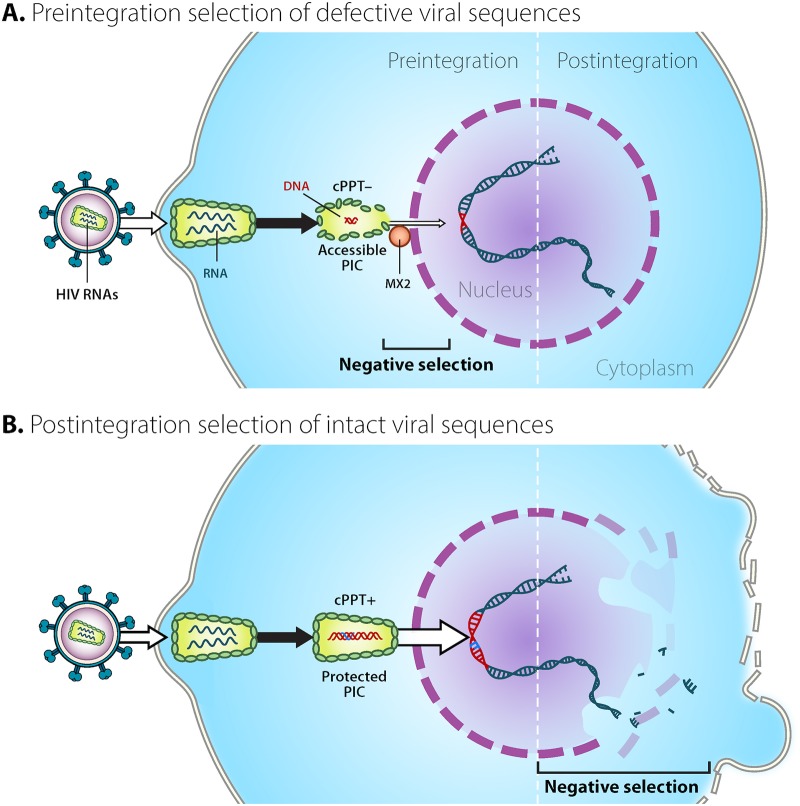FIG 6.
HIV sequences undergo strong pre- and postintegration selection. Here, we provide a visual summary of possible mechanisms contributing to the preintegration bottleneck for massively deleted viral sequences in rCD4 T cells as well as the postintegration selection of intact proviruses. (A) Negative selection for defective viral sequences occurs prior to integration. As a result of multiple factors, including low dNTPs and higher levels of restriction factors, HIV reverse transcription is slow in resting cells and might result in the generation of more deleted viral sequences than activated cells. Preintegration complexes (PICs) containing intact DNA sequences appear to translocate the nuclear pore more efficiently (B) than deleted ones (A). This is reasonable, since deleted sequences generally lack structural elements, such as the central polypurine tract (cPPT), that might contribute to nuclear import. Additionally, reverse transcriptase pausing might provide a longer temporal window for innate restriction factors, including Mx2, to have an effect. This, in turn, could lead to the decreased efficiency of nuclear import. (B) Negative selection for intact forms after integration. Cells harboring intact proviruses are more likely to be cleared as a result of both viral and immune cytotoxicity. (Courtesy of Mary Leonard; reproduced with permission.)

